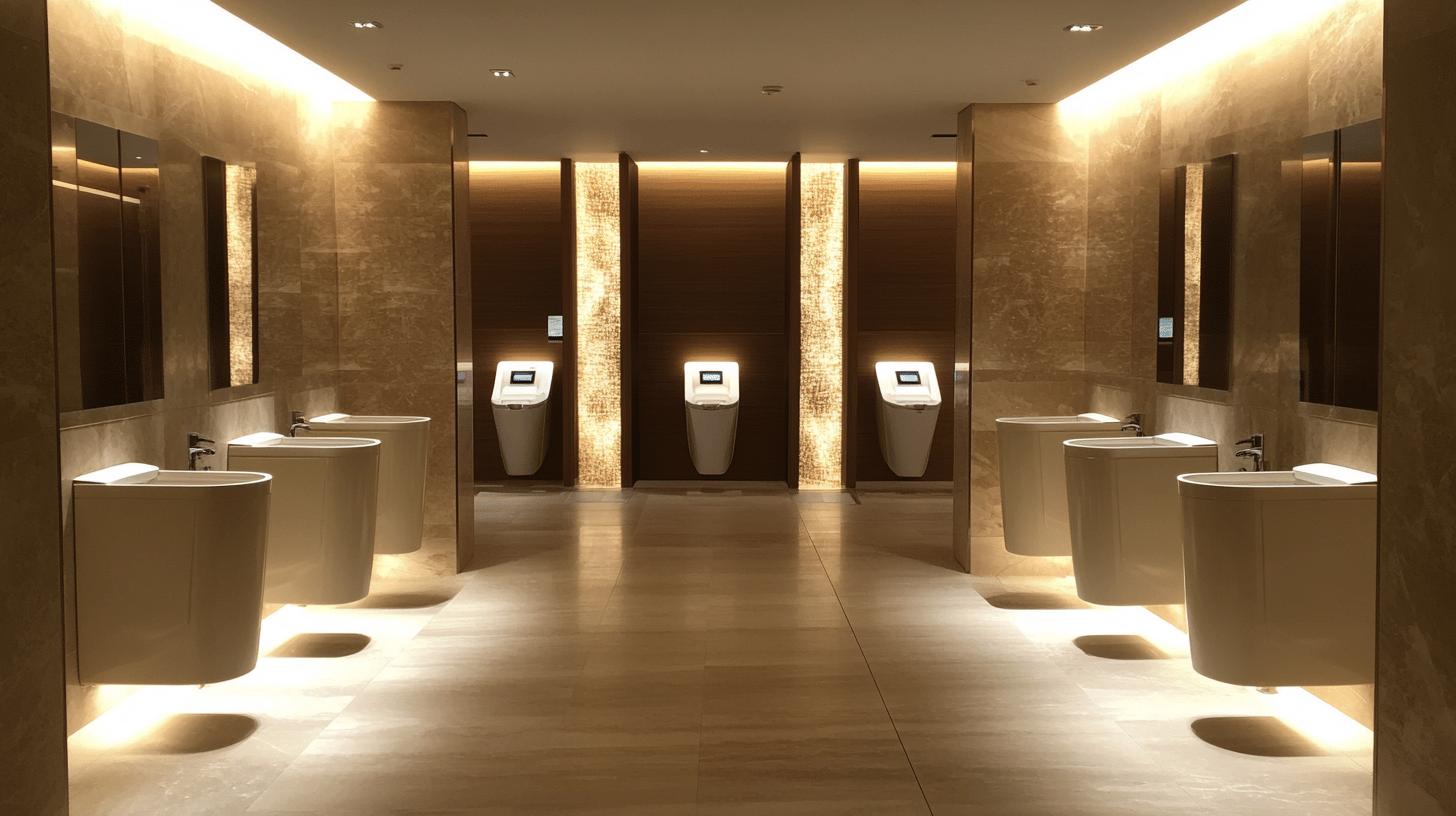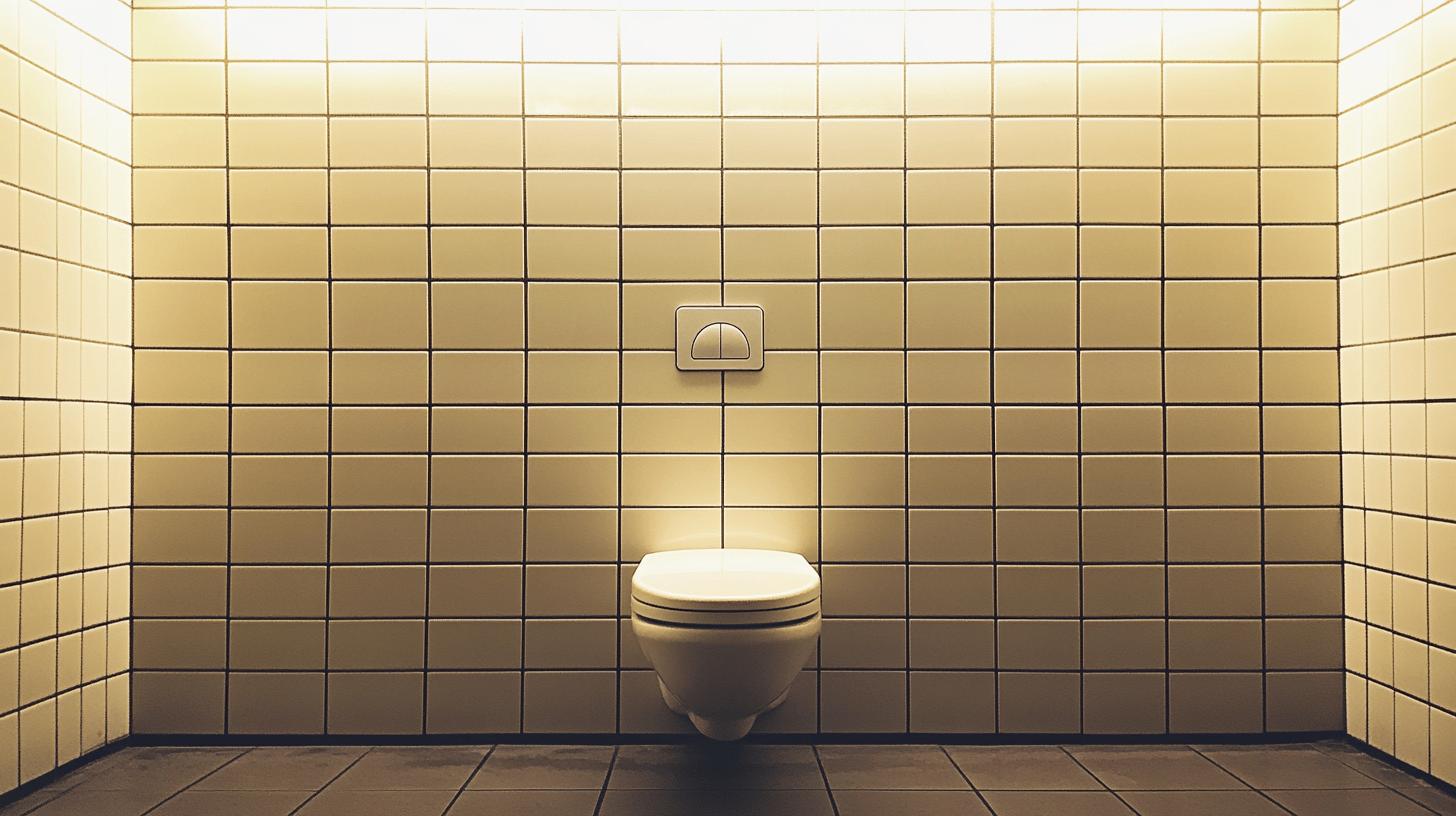TL;DR:
- Purpose: Automatic flushing systems enhance restroom hygiene by using sensors to trigger flushes, minimizing contact.
- Components: Infrared sensor (detects users), solenoid valve (controls water flow), power source (batteries/transformers), waterproof cables (protects connections).
- Types: Battery-operated (flexible, easy install) and hardwired (constant power, suitable for new builds).
- Benefits: Reduces germ transmission, conserves water, lowers maintenance, and supports hygiene in high-traffic areas like public restrooms.
- Installation: Consider plumbing compatibility, electrical connections, and space aesthetics.
- Maintenance: Regularly check sensors, power sources, and water supply for optimal performance.
Isn’t it time to upgrade from manual flushing? Enter automatic flushing systems—high-tech, hands-free solutions that improve hygiene and save water. Using sensors, these systems flush without needing to touch anything, cutting down on germs. Want to know how they work? Let’s break down the parts and see how automatic flushers can make life easier.
Understanding Automatic Flushing Systems
Automatic flushing systems make restrooms cleaner and easier to use. They use infrared or motion sensors to automatically flush toilets and urinals after use, so there’s no need to touch anything. This cuts down on germs and helps keep restrooms clean without extra effort. These systems are perfect for busy places like public restrooms, where hygiene and efficiency matter most.
- Infrared Sensor: Senses user presence and starts the flush.
- Solenoid Valve: Manages water flow based on sensor signals.
- Power Source: Provides electricity, often via batteries or direct connection.
- Waterproof Connector Cables: Protects electrical parts from moisture.
These parts work together to make automatic flushing seamless. The sensor detects when someone is done and signals the solenoid valve to release water. Electricity powers the system, and waterproof cables keep everything safe and dry. This hands-free setup keeps restrooms cleaner with less effort and maintenance.
How Automatic Flushing Systems Work

Automatic flushing systems use infrared sensors to detect when someone is near. The sensor sends a signal to the solenoid valve, which opens to release water for flushing. This hands-free setup makes restrooms more convenient and reduces the spread of germs. The system automatically flushes when the user leaves or after a set time if no one uses it.
These systems can be powered by batteries or transformers. Battery-powered units are flexible and don’t need direct electricity, while transformer-powered systems use the building’s electrical supply for consistent power. Both options keep restrooms clean with minimal manual effort.
| Component | Function |
|—————————-|—————————————————–|
| Infrared Sensor | Detects user presence and triggers the flush signal |
| Solenoid Valve | Manages water flow for flushing |
| Power Source | Supplies energy for system operation |
| Waterproof Connector Cables| Protects electrical connections from moisture |
Benefits of Automatic Flushing Systems
Automatic flushing systems improve hygiene by eliminating the need to touch flush handles, which helps reduce the spread of germs. This is especially important in public restrooms, where many people use the facilities, increasing the risk of contamination. By offering touch-free operation, these systems help lower germ transmission and support better public health.
- Controlled flushing for water efficiency.
- Adjustable flush volumes for water conservation.
- Less water waste in busy locations.
- Environmental benefits from reduced water use.
- Compliance with water-saving laws.
Automatic flushing systems not only improve hygiene but also make restroom visits easier and reduce maintenance. With hands-free operation, they ensure a smooth experience for users and minimize wear from manual flushing. These systems keep facilities clean and efficient with less intervention, making them a dependable solution for any restroom.
Types of Automatic Flushing Systems

There are two main types of automatic flushing systems: battery-operated and hardwired. Battery-operated systems are flexible, don’t require direct electrical connections, and are great for retrofitting older buildings. They work for both toilets and urinals and are easy to install. Hardwired systems connect to the building’s power supply, offering constant power with no need for battery changes, making them perfect for new constructions. Both options help maintain hygiene with minimal manual effort.
Applications and Installation Considerations
Automatic flushing systems are essential in busy places like public restrooms and office buildings. Why? They keep high-traffic areas clean and efficient without manual effort. Airports, malls, and offices benefit from these systems by maintaining hygiene through automatic flushing after each use, handling heavy user flow with ease.
When installing, make sure the system is compatible with your existing plumbing and electrical setups. It’s important to confirm that your water supply and drainage can support the new system, and that there are enough electrical connections for the sensors. Additionally, consider the space and look of the restroom, ensuring the system fits in smoothly without disrupting the design.
Maintenance Tips
Regular maintenance is key to keeping automatic flushing systems running smoothly. Here’s what to do: regularly check the sensors and power sources, whether they’re battery-operated or hardwired. Inspect the water supply for leaks or blockages to prevent service interruptions. Keeping the sensors clean and free from debris ensures they work accurately and helps extend the life of the equipment. With consistent upkeep, your system will stay efficient and maintain hygiene in busy restrooms.
Final Words
Automatic flushing systems play a crucial role in modern restrooms, improving both user experience and hygiene. By using advanced sensors, they eliminate the need for manual flushing, cutting down on germ transmission. These systems also conserve water and make restroom use more convenient.
There are different types, like battery-operated and hardwired models, each with benefits depending on the environment. Whether for public or commercial restrooms, these systems reduce maintenance and easily integrate with current plumbing setups. In short, automatic flushing systems are a key innovation for maintaining cleanliness and efficiency in high-traffic areas.
FAQ
Automatic Flushing Device for Municipal Water Systems
Q: What is an automatic flushing device?
A: An automatic flushing device is designed to flush toilets or urinals without manual effort, using sensors to detect presence and trigger the flush for enhanced hygiene and convenience.
Q: How does automatic flushing work?
A: Automatic flushing systems use infrared sensors to detect users, signaling a solenoid valve to manage water flow. They flush automatically after usage or if unused for 24 hours, powered by batteries or a transformer.
Q: What is the purpose of the flushing system?
A: The purpose of a flushing system is to improve hygiene by minimizing physical contact, thereby reducing the spread of germs, and to conserve water through automated, controlled flushing.
Automatic Flushing Toilets and Valves
Q: Do automatic flush toilets waste water?
A: Automatic flush toilets are designed to conserve water through controlled flushing. Some models include water-saving modes tailored to usage duration, reducing unnecessary water wastage.
Q: What are automatic flush valve options for water lines?
A: Automatic flush valves can be battery-operated or hardwired, catering to different installation needs. These are suitable for both urinals and toilets, offering versatile applications in various settings.
Benefits and Applications of Automatic Flushing Systems
Q: What are the hygiene benefits of automatic flush systems?
A: Automatic flush systems reduce physical contact, minimizing germ spread, thus enhancing overall restroom hygiene.
Q: What are the typical applications for automatic flushing systems?
A: These systems are commonly used in public restrooms, commercial buildings, and high-traffic areas due to their reliability and ease of maintenance.

